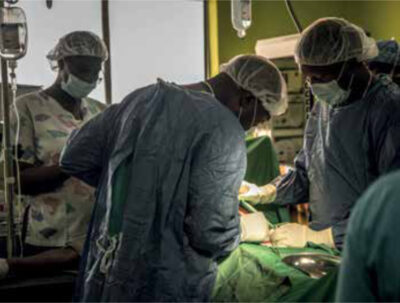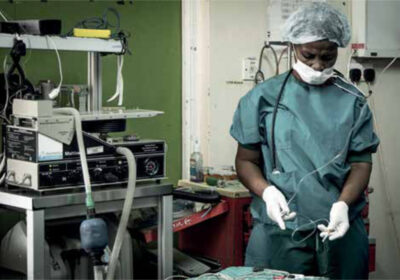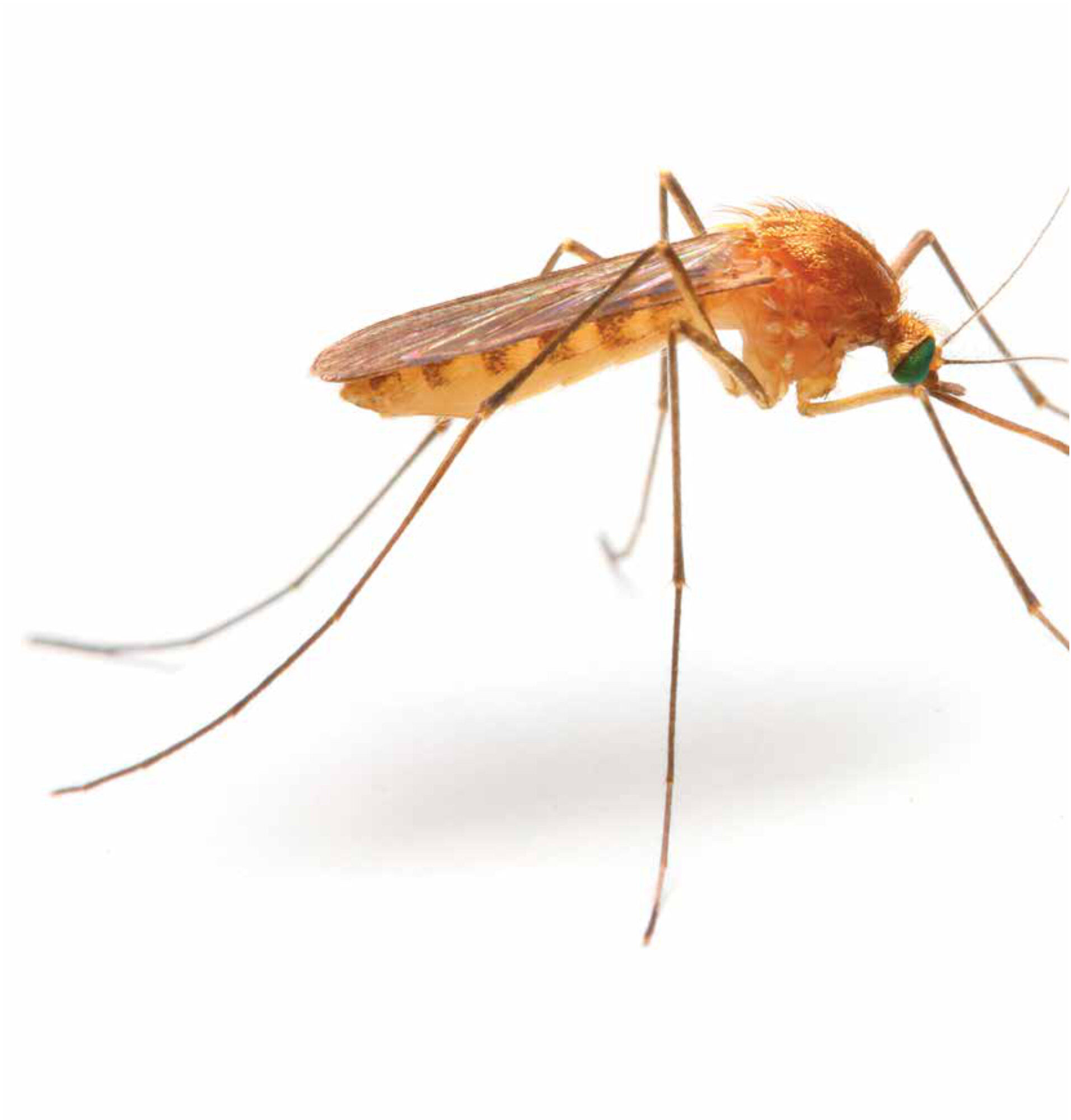Main content
| The following article is based on an interview conducted with Dr Jakub Gajewski and Dr Papytcho Ntambwe in January, 2021. Dr Jakub Gajewski is the director of the research programme of the Royal College of Surgeons in Ireland (RCSI) Institute of Global Surgery. He is the international coordinator and the lead researcher for the SURG-Africa project. Dr Papytcho Ntambwe is an anaesthesiologist who works at Livingstone Central Hospital in Zambia, one of the hospitals involved in SURG-Africa. |
Over the past decades, there have been numerous approaches and attempts to increase surgical capacity in low-resource settings. Many have unfortunately overlooked a fundamental tenet without which most surgeries cannot occur: for a patient to undergo a surgical procedure, they must first be properly anaesthetised. In most low- and middle-income countries (LMICs) across the world, the extreme shortage of well-trained anaesthetists is not only shocking but is in many ways compounding systemic challenges that already leave hundreds of millions of people without access to basic lifesaving and life altering surgical procedures.[1]
Shortage of anaesthesiology providers
The SURG-Africa project, funded by the European Union’s Horizon 2020 programme,[2] started in 2017 with the aim of assessing and implementing surgical systems that deliver safe, affordable and sustainable essential surgical services to rural populations in LMICs. At the beginning of this project, the research team examined the current state of surgical care in the three countries involved – Tanzania, Malawi and Zambia – in order to improve understanding of systemic challenges and limitations. Based on the results, Dr Gajewski, the lead researcher for SURG-Africa, and his team found that in these areas, many of the shortages and gaps in surgery could be attributed to the limitations in the capacity of anaesthesia. There was not a single anaesthesiologist present in any of the surveyed hospitals at the district level, and even in national level hospitals the number of medical doctor (MD) anaesthetists was shockingly low. “In Zambia, there are only 26 MD anaesthetists in the entire country serving a population of 18.7 million people, whereas in Malawi that number is, even more shockingly, four MD anaesthetists for 19.4 million people”, according to Gajewski. Upon further examination, Gajewski confirmed that the extreme lack of anaesthesia providers in the three countries taking part in the study was not an anomaly, but rather evidence of an issue seen throughout many LMICs in the world – particularly across Sub-Saharan Africa.
Challenges in creating an adequate workforce of anaesthetists
The lack of qualified anaesthetists has created an uneven balance between anaesthesia and surgical providers, the latter being comparatively much better staffed in these regions. This mismatch has a detrimental effect on surgical capacity and limits the types of procedures that can be performed in many health care facilities, accounting for significant morbidity and mortality when insufficiently trained health workers are tasked with administering anaesthetic agents. “There are far more people who can do an operation than who can anaesthetise the patient. That means that if you have only one person as part of the operating team who can anaesthetise, that person would need to work all the time, which is impossible”, Gajewski explains.
Dr Ntambwe, an anaesthesiologist working in Livingstone Central Hospital in Zambia, offers a local insight on why so many more physicians turn to surgery and away from anaesthesia, explaining that there is a lack of incentive to work in anaesthesiology. The constant demand placed upon anaesthetists would require them to work significantly more hours than numerous other specialties in medicine: “A clinical officer anaesthetist has to work eight hours a day, whereas a clinical officer psychiatrist works four to six hours a day, but they end up getting the same salary.”

Dr Gajewski adds that many physicians are propelled into surgery by the perceived social benefits that come with the role: “In the northern hemisphere, surgical care is more of a teamwork approach, whereas in these settings the surgeon is the dominant figure. He gets power and influence over the whole team, so people strive for that.”
Of the very few MD anaesthesiologists who work within these countries, many can end up being the only person with their specialty in a specific facility or institution. Without a network of well-trained colleagues to continue learning and receive supervision from, it is hard for many workers to maintain their level of skills and knowledge. Gajewski refers to this phenomenon as “professional isolation”, where anaesthetists who may have been initially well trained may end up lacking skills they would acquire with more access to training, resources, and mentorship. This can account for a significant reduction in the skill and ability of an already limited workforce, further hindering surgical capacity.
This limited workforce exists on top of shortages and extensive gaps in equipment and supply. These range from disruptions in water and electricity, limited counterfeit and low-quality medications, shortages in supplies that extend from gloves to oxygen, obsolete equipment and machines, and insufficient sterilisation techniques, to name a few. Such challenges to an already resource-deprived health system increase the importance and value of having capable and well-trained providers in every specialty, including anaesthesia.

Solutions and efforts to improve workforce
Recognition of the severe shortages of anaesthesia providers has put emphasis on the need to improve the capacity of the workforce going forward. Although the shortage of anaesthesia providers varies from country to country, many nations are implementing parallel programmes and strategies to create a larger, more skilled and interconnected workforce of anaesthetists.
An example of this effort to improve the capacity of the workforce on a local level is seen in one of SURG-Africa’s projects, which brings mentorship and supervision to isolated providers in district level hospitals. Such interventions aim to address professional isolation and increase the capacity of existing providers by reinforcing a more cohesive team approach. “There was a surgeon, an anaesthesiologist and a nursing specialist to supervise, train and mentor local teams, providing them with the latest knowledge within the discipline. The idea was to do better within existing skills, rather than just to expand,” explains Gajewski.
On a regional level, an initiative has been started by CANECSA (the College of Anaesthesiologists of East, Central and Southern Africa)[3] training new MD anaesthesiologists through an IrishAid supported collaboration programme. The constituent member countries of this initiative are Eswatini, Kenya, Malawi, Rwanda, Tanzania, Uganda, Zambia and Zimbabwe. Training provided in institutions accredited by CANECSA is aimed not only at expanding the workforce but also at improving the quality of care.
Merely increasing the number of MD anaesthesiologists, however, is not feasible as a standalone strategy to fill what is an immense gap. Zambia offers a two-year training of registered nurses to become anaesthesia providers, part of an effort to train a capable workforce of non-physician clinicians (NPCs) to become non-physician anaesthesia providers (NPAPs). This strategy of increasing the NPAP workforce is seen as the only way in the short term to supply the necessary number of anaesthetists to keep up with surgical demand. The usage of NPAPs is becoming increasingly prevalent in many forms throughout numerous countries in the world, including high-income countries.
There is some doubt, however, that a two-year training course is sufficient to train NPCs to work autonomously in a role so challenging and with such dire consequences when not performed properly. According to Dr Ntambwe, it has been a challenge in Zambia. “After the two-year training, it takes time for these nurses to be able to work autonomously in terms of providing anaesthesia. Therefore, they go for an internship in the big centres for another year. But still, in the end, they will only be able to provide anaesthesia for the basic emergency surgeries which are performed in the district hospitals. For the other surgeries they will need to refer.” To this, Dr Gajewski adds a positive note: “Despite these challenges, growing research evidence does show comparable surgical or anaesthesiologic outcomes between non-physician and physicians, as long as you put a clear ceiling on their tasks and qualifications, and provide periodic supervision.”
Going forward
Global health programmes are continuing to work to improve the capacity of the existing anaesthesia workforce through research and advice on training programmes, but many experts like Dr Gajewski are adamant that change will have to come from initiatives within the health ministries. “In order to achieve sustainable improvements in manpower, as well as equipment and supplies, the leading role should be with the ministry”, Gajewski explains. “The global health community should step away a bit to allow local empowerment. Running just on projects is not the way to go. The results of the projects are presented to the ministry, but eventually they need to take over and be in charge, be responsible and accountable towards their own clinicians and patients who are the voters in how to make the system better.” For now, Zambia and other countries in the area grapple with the added burden of the pandemic and its associated surgical disruptions. Dr Ntambwe informs us that presently (January 2021), the country has suspended elective surgeries to accommodate the heightened demand on health systems created by the Covid-19 pandemic.
References
- Meara JG, Leather AJM, Hagander L, et al. Global Surgery 2030: evidence and solutions for achieving health, welfare, and economic development. Lancet. 2015 Aug 8;386(9993):569-624. doi: 10.1016/S0140-6736(15)60160-X
- SURG-Africa. Scaling up safe surgery for district and rural populations in Africa [Internet]. Available from: https://www.surgafrica.eu/uploads/1/0/6/5/10659222/ad3158_surg_africa_as_flyer_final_5_single__3_.pdf
- CANESCA [Internet]. Arusha: CANESCA; 2018. About us. Available from: https://canecsa.com/about-us-2/



















































